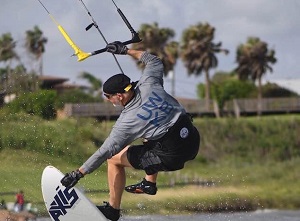Knee and Leg Injuries & Conditions
Don’t let pain bring you to your knees. Weekend warriors and elite athletes are all susceptible to common types of knee injuries, such as ACL and meniscus tears. Even for those less active, knee and leg injuries, such as shinbone or kneecap fracture, are more than painful; they can have a serious impact on your mobility and quality of life.
Treatment options vary depending on the type, location and severity of the injury. What doesn’t change is the fact that it’s important to seek treatment for knee and leg injuries right away to ensure you’re back on your feet as soon as possible.
Whether you’re a weekend warrior or highly trained athlete, anterior cruciate ligament (ACL) injuries don’t discriminate. An ACL injury happens when you sprain or tear a ligament in your knee. This condition is not uncommon, especially in athletes who compete in high impact sports. ACL injuries can range from a mild sprain to a complete tear, although near complete or complete tears are most common. Surgery may be necessary to return to normal activities.
Symptoms
If you twist your knee and hear a “pop” you may have an ACL injury. Other symptoms include:
- Severe pain and swelling
- Loss of full range of motion
- Difficulty walking
Avoid sports or strenuous activities after an ACL injury, even if the pain and swelling subside, as your knee may still be unstable and you’ll risk further damage.
Treatments
You should see your doctor right away if you have an ACL injury. He or she will likely be able to diagnose the condition by a physical examination of the knee.
ACL tears won’t heal on their own without surgery. However, older and/or inactive patients with a stable knee may be able to avoid surgery with a brace or crutches and physical therapy.
For most active people, surgery will be required to get back to normal activities. The procedure involves rebuilding the ligament with a tissue graft. The graft can be taken from other tendons in the knee or thigh areas or from a cadaver. Your surgeon will help you determine the best graft source.
ACL surgery is done arthroscopically, which is less invasive and painful than typical surgery. The procedure also typically ensures less time in the hospital and faster recovery. It may take six months or more for the ligament to regrow.
Physical therapy is essential to help you resume your pre-injury activities, especially for athletes. Working with a physical therapist, you’ll begin by focusing on regaining motion in the joint. Next, your program will focus on regaining strength in the ligament followed by a customized training program.
Surgical Procedures
Anterior Cruciate Ligament (ACL) Repair
Inside the knee joint, there are four main ligaments that work together to stabilize the knee joint. The most commonly injured ligament is the anterior cruciate ligament (ACL). The ACL functions to stabilize the knee joint from front to back and is important in “cutting” or “agility” type sports including tennis, basketball, soccer, etc. When the ACL is torn, the orthopedic surgeon can work to repair or remove the damaged ligament and replace it with a new ligament graft that the patient’s body will incorporate. These new ligament grafts are either allografts (donor tissue) or autografts (patient’s own tissue), and our surgeons will help recommend what graft is best for each individual.
If you participate in sports, you’ve most likely heard of or maybe experienced a meniscus tear. This common knee injury can actually happen to anyone at any age. The condition occurs when the cartilage between your thighbone and shinbone is torn due to twisting the knee or forceful impact. As we age, cartilage becomes weaker and is more susceptible to degenerative meniscus tears, which can occur from something as simple as standing up from a seated position.
Symptoms
When you tear a meniscus, you may feel a pop but will likely still be able to walk. After a few days, your knee will swell and feel stiff. Other symptoms include:
- Pain
- Locked knee
- Instability
- Loss of full range of motion
Left untreated, a piece of meniscus could become loose causing additional problems with your knee.
Treatments
Your doctor will be able to diagnose a torn meniscus through a physical examination and may order imaging tests, such as X-rays, to confirm the diagnosis. Your treatment will depend on the severity of the tear as well as its size and location. Your age and level of activity will also help to determine the best treatment plan for you.
Depending on the injury, you may be able to avoid surgery and instead follow the RICE protocol:
- Rest – Avoid strenuous activity and possibly use crutches to keep weight off the injury.
- Ice – Regularly apply cold packs to the affected knee.
- Compression – Wear an elastic compression bandage to prevent swelling.
- Elevation – Recline with your injured leg elevated above your heart.
Anti-inflammatory medications such as aspirin and ibuprofen can help relieve pain and swelling.
If the RICE method doesn’t help, you may need knee arthroscopy to repair the tear. Other procedures include partial meniscectomy or meniscus repair. After surgery, your doctor will determine when you have sufficiently healed and can begin rehabilitation exercises to restore mobility and strengthen your knee. Your doctor may also prescribe physical therapy. Depending on the type of injury and surgery, you can expect rehabilitation to last anywhere from three weeks to three months.
Surgical Procedures
Knee Athroscopy / Meniscectomy
A knee arthroscopy or “knee scope” is a surgical procedure in which the orthopedic surgeon uses a camera to visualize the internal structure of the knee joint. Through this minimally invasive scope, the surgeon can address cartilage and meniscus damage. Inside the knee joint, there is a medial and lateral meniscus. The meniscus serves to provide shock absorption for the knee joint. When the meniscus is damaged, the surgeon can work to smooth out the damaged area to the meniscus. This is called a meniscectomy.
A quadriceps tendon tear is an uncommon injury that mostly occurs among middle-aged people who participate in running or jumping activities. The condition may also be the result of a fall or impact to the front of the knee. A weakened quadriceps is more susceptible to a tear. Causes of weakness include tendinitis or chronic disease such as leukemia or rheumatoid arthritis.
Symptoms
You may experience a feeling of popping or tearing when a quadriceps tendon tears, followed by pain and swelling. It may be difficult to walk if your knee buckles. Other symptoms include:
- A dent on your kneecap where the tendon tore
- Bruising, tenderness and cramping
- Sagging kneecap
Treatments
Your doctor will conduct a physical examination of your knee to determine the extent of damage. He or she may order imaging tests, such as X-rays, to confirm the diagnosis.
- Your treatment plan will based on multiple factors, including:
- The extent of the tear
- Your level of activity
- Your age
If your tear is small or partial, you can most likely avoid surgery. Non-surgical treatments include using a knee immobilizer or brace for three to six weeks to keep your knee straight and help it heal. You’ll probably need crutches as well. Your doctor also may recommend physical therapy to help restore strength and range of motion in your knee.
If the tear is complete or associated with tendon degeneration, you’ll probably need surgery. Early repair typically results in better outcomes. The surgical procedure will reattach the tendon and reposition your kneecap to match the uninjured knee. If you wait too long for surgery, the tendon may shorten and require a skin graft.
After surgery, your doctor will prescribe pain medication and you’ll like wear a knee immobilizer or leg cast. Later, you’ll begin physical therapy with exercises to help strengthen and restore your mobility. You can expect to recover completely in four to twelve months.
When the thigh bone breaks (fractures) above the knee joint, doctors call the injury a distal femur fracture. This type of severe injury happens most often in elderly people with weak bones or younger people who sustain a high impact injury, such as an automobile accident.There are different kinds of distal femur fractures. The skin may be intact (closed fracture) or open with bone protrusions. Open fractures tend to be more serious and take longer to heal.
Symptoms
If you have a distal femur fracture, you’ll experience pain when you put any weight upon the injured leg. Other common symptoms include swelling, bruising or tenderness in the knee or thigh area. Your knee and/or leg may look irregular.
Treatments
Your doctor will give you a thorough physical exam to assess your injury and also order diagnostic tests including X-ray.
Nonsurgical treatments are less common; casts and braces may be used in specials cases if the fracture only involves two parts.
There are different types of procedures that surgeons may use to treat distal femur fractures. The location and extent of the fracture will factor into which operation will produce the best outcome. For elderly patients with weak bones, a bone grafts or artificial bone fillers may be used to help the bone health. In extreme cases, the surgeon may instead opt for a knee replacement implant.
After surgery, your doctor will prescribe pain medication. Depending on your age and injury, it may take some time before your doctor recommends movement activities. In other cases, a physical therapist will begin gentle movement exercises to help prevent stiffness. You should keep weight off the injured leg until your doctor feels it safe, sometimes for a period of three months or more. You’ll need crutches or a walker and may also wear a knee brace for support. Even with physical therapy and rehabilitation, it may take a year or more to fully heal from this serious injury.
Surgical Procedures
Fracture Care
When a bone is broken is it called a fracture. Orthopedic surgeons can work to realign the broken bones and secure the bones in place. The goal is to restore proper alignment and stabilize the bone ends to allow healing. This can be accomplished through a variety of surgical techniques including open and minimally invasive methods such as plate and screws, “nailing,” or “pinning”.
The patella, commonly known as the kneecap, is the bone at the front of your knee where your thigh bone and shinbone meet. The patella serves an important function because it protects the knee joint. If you break this bone, it’s called a patellar fracture.
A fractured patella is the result of direct impact to the bone. It may be broken in two pieces or fractured into multiple pieces. If the bone remains in place, the fracture is considered stable and may not require surgery. For fractures where the bone is displaced, surgery is likely necessary for repair.
Symptoms
Pain and swelling in the front of the knee are the the most common symptoms of a patellar fracture. Other symptoms may include:
- Bruising
- Difficulty straightening or extending the knee
- Difficulty walking
Treatments
Your doctor will physically examine your knee. If you have large amounts of blood pooled in the knee from the fractured bone, your doctor may drain it to relieve the painful swelling. He or she will also order X-rays from different angles to see the extent of the fracture.
If the broken bone is stable and in place, your doctor may recommend a cast or splint to keep your knee straight and immobile. Depending on the type of fracture, you may not be allowed to put weight on your leg for six to eight weeks.
If the broken bone is no longer in place, your doctor will likely recommend surgery. The type of procedure the surgeon performs will be based upon your injury. After surgery, icing the knee and over-the-counter pain medications usually are all that patients need to manage pain.
To return to your normal activities, you’ll need rehabilitation. You’ll be given exercises that will help decrease stiffness, improve the range of motion in your knee and strengthen your leg muscles. Recovery times vary, primarily based on the severity of the injury.
Surgical Procedures
Fracture Care
When a bone is broken is it called a fracture. Orthopedic surgeons can work to realign the broken bones and secure the bones in place. The goal is to restore proper alignment and stabilize the bone ends to allow healing. This can be accomplished through a variety of surgical techniques including open and minimally invasive methods such as plate and screws, “nailing,” or “pinning”.
A shinbone, or tibea, is one of the most commonly broken bones in your body. It is usually due to a high impact event, such as an automobile accident. Depending on the injury, tibia fractures may range from a stable fracture where the pieces of bone line up correctly to a displaced fracture where the bones may be completely out of alignment.
Symptoms
A broken shinbone usually causes immediate, severe pain. Other symptoms may include:
- Inability to walk or put weight on the leg
- Abnormal appearance or instability
- Loss of feeling in the foot
Treatments
If you are in poor health, are generally inactive, or have a closed fracture where the ends of the bones are correctly aligned, then your doctor may not recommend surgery. He or she may apply a splint to provide comfort and support and consider a range of treatment options once swelling is reduced.
For more complicated fractures, surgery may be necessary. Your doctor will prescribe medication for short-term pain relief after the surgery or an injury, such as acetaminophen, nonsteroidal anti-inflammatory drugs (NSAIDs), gabapentinoids, muscle relaxants, opioids, and/or topical pain medications.
Your doctor will give you instructions about putting weight or your leg and, at first, you will likely need to use crutches or a walker for support. Your doctor will recommend physical therapy to help to restore normal muscle strength and flexibility.
Surgical Procedures
Fracture Care
When a bone is broken is it called a fracture. Orthopedic surgeons can work to realign the broken bones and secure the bones in place. The goal is to restore proper alignment and stabilize the bone ends to allow healing. This can be accomplished through a variety of surgical techniques including open and minimally invasive methods such as plate and screws, “nailing,” or “pinning”.
Osteoarthritis (OA) is sometimes referred to as “wear-and-tear” arthritis. It occurs when the cartilage that covers the ends of bones in the joints gradually wears away and becomes a frayed, rough surface. This makes joint motion along this exposed surface painful. (This definition of OA comes from the American Academy of Orthopaedic Surgeons.)
Knee osteotomy is used when a patient has early-stage osteoarthritis that has damaged one side of the knee joint. In a knee osteotomy, either the tibia (shinbone) or femur (thighbone) is cut and then reshaped to relieve pressure on the knee joint, relieving pain and improving function in an arthritic knee.
Symptoms
- Knee pain occurs mostly with activity or by standing for a long period of time
- You are able to fully straighten your knee and bend it at least 90 degrees
- You do not have rheumatoid arthritis
Treatments
The surgery consists of replacing the ends of the bones with a metal prosthesis. Pain medication will be prescribed, but medication is only part of your pain management. There are other methods you might find helpful in managing your pain:
Relaxation/Distraction: Relaxation exercises and deep breathing can help relax your muscles and decrease your pain. Distraction techniques may include listening to music, watching television, or visiting with a family member.
Repositioning: Sometimes all it takes to relieve pain is to change your position. In fact, frequent changes in position are recommended. Sitting at the side of the bed, going to the bathroom, or standing at the side of the bed are some examples.
Rest: Allow yourself plenty of rest to maximize your rehab and recovery time. It’s okay to ask your visitors to leave.
Physical therapy: This is an important part of your rehabilitation. You will be given exercises that decrease stiffness, improve the range of motion in your knee and strengthen your leg muscles. Recovery time varies.
Related Posts
Ted’s I’m Back Story
2024-03-26T09:02:04-05:00By OSMS|Categories: I'M BACK, Knee & Leg, Orthopedics, Recovery|
When Ted tore the meniscus in his right knee in October 2017, he thought all would be well after he had surgery to repair it. [...]
Hip and Knee Total Joint Replacement Revisions – An Overview
2024-04-23T13:12:45-05:00By OSMS|Categories: Joint Replacement, Knee & Leg, Orthopedics|
Hip and Knee Total Joint Replacement Revisions - An Overview by Dr. Douglas Miller, OSMS Hip and Knee Replacement Specialist Dr. Douglas Miller’s expertise lies [...]
Theresa D’s I’m Back Story
2025-03-19T19:53:09-05:00By OSMS|Categories: I'M BACK, Knee & Leg, Orthopedics, Recovery, Sports Medicine, Video|
Soccer. Running. Being outdoors. Being a wife and mom. These are the things that Theresa loves to do most. When Theresa went for a 50/50 [...]
Mira’s I’m Back Story
2024-03-19T10:26:29-05:00By OSMS|Categories: I'M BACK, Juvenile Arthritis, Knee & Leg, Orthopedics, Rheumatology, Video|
Think back to when you were 12 years old. What was your favorite thing to do? For Mira, it’s being active in things like gymnastics [...]
Mike’s I’m Back Story
2024-03-26T09:00:47-05:00By OSMS|Categories: I'M BACK, Joint Replacement, Knee & Leg, Orthopedics|
Traveling the world and feeling the waves crash beneath his kiteboard is one of the best feelings for Mike. But when his knees started to [...]
Common Knee Injuries and Prevention Tips
2024-04-23T13:38:40-05:00By OSMS|Categories: Knee & Leg, Orthopedics|
By: Dr. Tom Sullivan, Orthopedic Surgeon Your knee hurts. Because of it, you walk gingerly or even limp. You have trouble bending it and straightening [...]


ORTHOPEDIC MENU
OUR DOCTORS
- William Albiero MD
- Peter Eggert MD
- William Enright MD
- Walker Flannery MD
- Luke Fraundorf MD
- Alejandro Garcia MD
- Michael Harper MD
- Joel Hein MD
- Karl Henrikson MD
- Jason Klein MD
- Jack (John) Leschke MD
- Daniel Linehan MD
- Joseph McCormick MD
- Douglas Miller DO
- Darren Nabor MD
- Michael Parman MD
- Gordon Roedel MD
- Bryan Royce MD
- Steven Schechinger MD
- Jacob Seiler MD
- Thomas Sullivan MD
- Michael Tressler MD
- Ben Zellner MD
- Ryan Ziegler DO
















